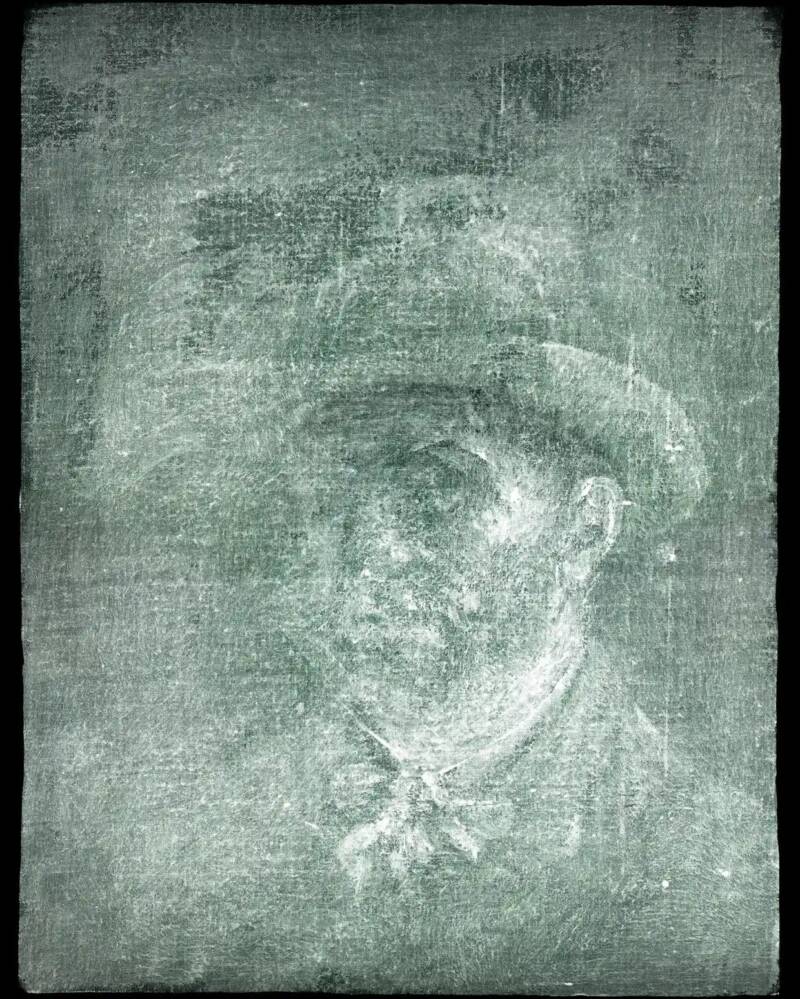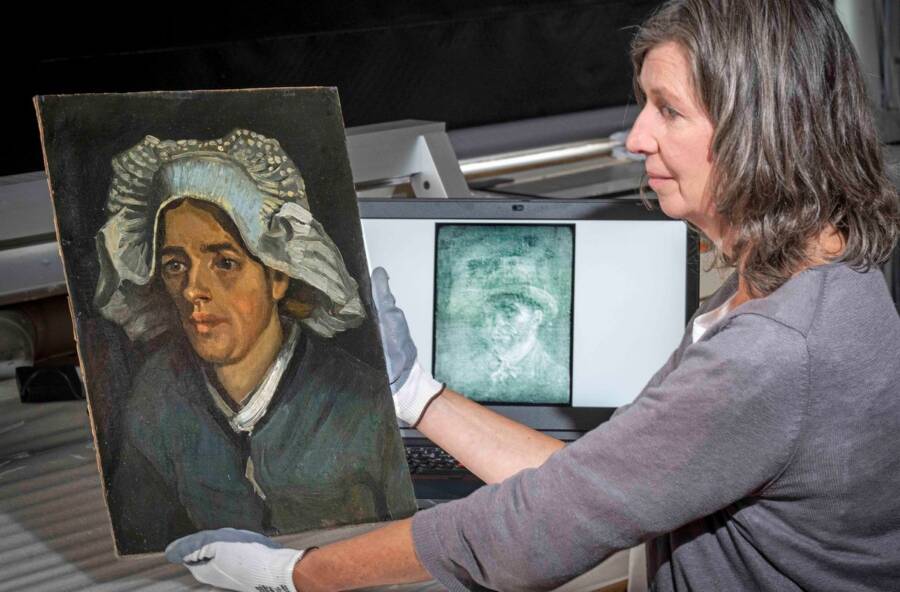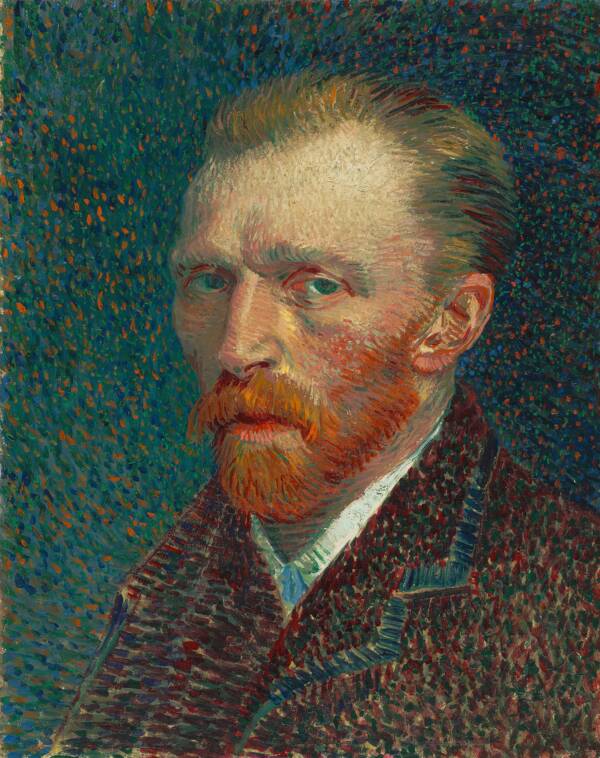Vincent van Gogh often reused his canvases to save money, and conservators suspect he painted the self-portrait on the back of a previously-completed painting.

Graeme Yule/National Galleries of ScotlandThe hidden Van Gogh self-portrait was found on the back of another painting.
When conservators at the National Galleries of Scotland began a routine X-ray of a Vincent van Gogh painting entitled Head of a Peasant Woman, they didn’t expect to find much. To their delight, they uncovered a forgotten Van Gogh self-portrait on the opposite side.
“We have discovered an unknown work by Vincent van Gogh, one of the most important and popular artists in the world,” announced Professor Frances Fowle, senior curator of French art at the National Galleries of Scotland, according to Al-Jazeera. Calling the moment of discovery “incredibly rare,” she added: “What an incredible gift for Scotland and one that will forever be in the care of the National Galleries.”
Conservators made the discovery while examining Head of a Peasant Woman as part of a cataloging exercise and to prepare for an upcoming exhibition of French impressionism, according to The Guardian. The painting had been donated to the museum in 1960 by an Edinburgh lawyer.
But as Lesley Stevenson, the senior paintings conservator at the National Galleries of Scotland, examined the X-rays, she found herself staring into the eyes of Vincent van Gogh himself.
“It was absolutely thrilling,” she said, according to the Guardian. “Lo and behold! We don’t see much of the peasant woman, but what we have is the lead white, the much heavier pigment he used for his face, showing up after the X-ray goes through the cardboard.”

Van Gogh’s Head of a Peasant Woman covered up a self-portrait the artist had painted on the other side of the canvas.
The “tantalizing discovery” shows “a bearded sitter in a brimmed hat with a neckerchief loosely tied at the throat,” explained a press release from the National Galleries of Scotland. “He fixes the viewer with an intense stare, the right side of his face in shadow and his left ear clearly visible.”
Van Gogh, of course, infamously cut off his left ear in 1888 following an argument with fellow artist Paul Gauguin.
According to the National Galleries of Scotland press release, Van Gogh frequently reused canvases to save money. He didn’t paint over earlier works but rather would paint on both sides of a canvas. Conservators suspect that’s what happened in this situation.
But 15 years after Van Gogh died in 1890 — before his work was appreciated and he became known as one of art’s greats — the self-portrait on the back of the Head of a Peasant Woman painting was apparently covered up with cardboard because it seemed less complete.
“Probably around 1905, when the Peasant Woman was lent to an exhibition at the Stedelijk Museum, Amsterdam, the decision was made to stick the canvas down on cardboard prior to framing,” the National Galleries of Scotland’s press release explained. “At this date the Peasant Woman was evidently considered more ‘finished’ than the Van Gogh self-portrait.”
The self-portrait has been hidden under glue and cardboard ever since.
“This is a significant discovery because it adds to what we already know about Van Gogh’s life,” Stevenson explained, according to Al-Jazeera. “There is lots to think about with regards to the next steps, but for us, it is another little nugget to get us a little bit closer to an incredible artist.”

Wikimedia CommonsVincent van Gogh’s famous Self-Portrait from 1887.
The next steps, it seems, will be to try and unveil the Van Gogh self-portrait entirely. For now, it’s encased under cardboard and glue, which will make revealing it a difficult procedure without damaging the self-portrait or Head of a Peasant Woman.
“It’s like stepping into the unknown,” Stevenson told the Guardian. “The challenge will be removing the adhesive from the oil paint layers, exploiting the difference in solubility of animal-based glue and oil-based paint.”
Until then, conservators have come up with an ingenious solution. The previously unknown Van Gogh self-portrait will be displayed at the Royal Scottish Academy in Edinburgh from July 30 until November 13. There, visitors will be able to see the painting through a specially-crafted lightbox.
After reading about the hidden Vincent van Gogh self-portrait, look through these fascinating Vincent van Gogh facts. Or, see how Van Gogh’s legacy has lived on in the digital age.





